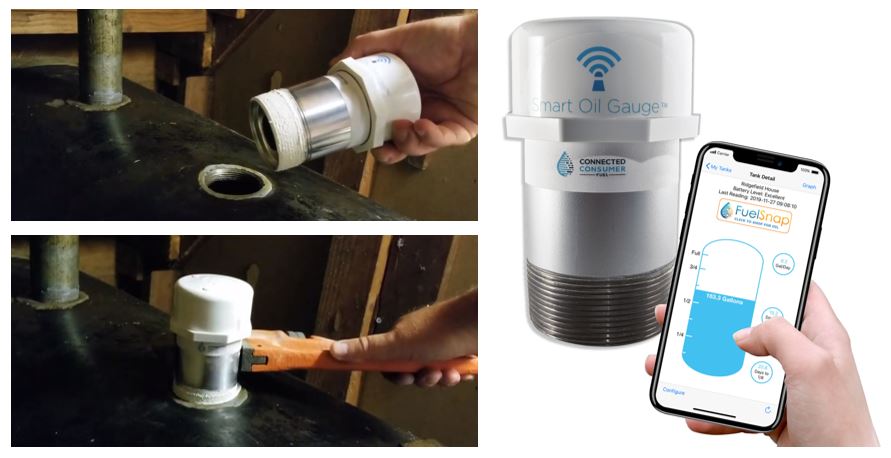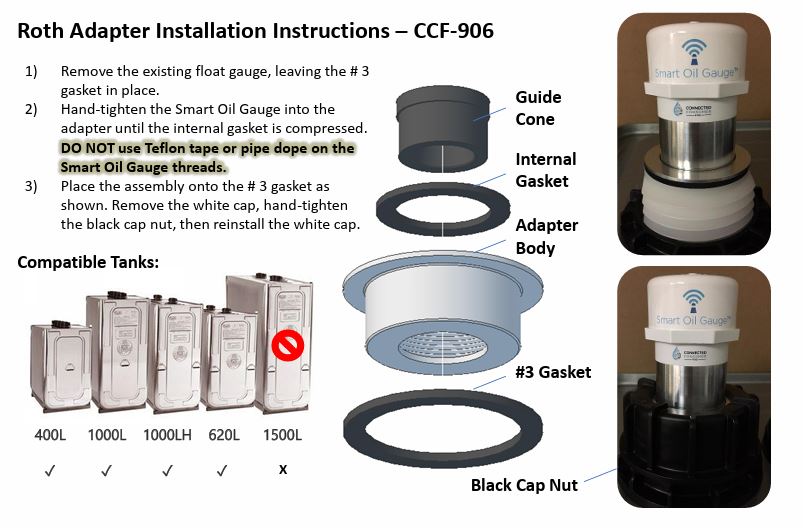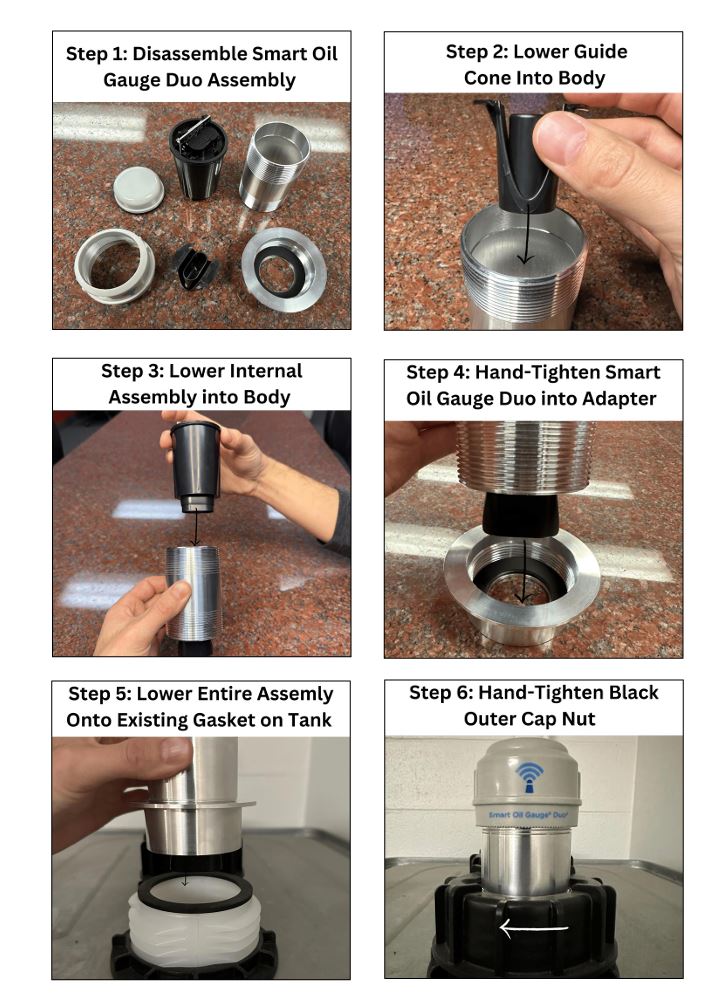While it might seem self-explanatory, ensuring that your Smart Oil Gauge is installed correctly is crucial. The installation process is a little bit different depending on your tank’s orientation, especially between Granby and Roth tanks. In this blog post, I’ll be covering the process of installation for your Smart Oil Gauge!
What You’ll Need
When it comes to installing the Smart Oil Gauge, you don’t need much. All you will need is a simple pipe wrench, pipe dope, and (if necessary) an adapter. We go over the specific types of adapters in this article here. Please note that the Smart Oil Gauge Duo cannot use standard adapters and will need specific adapters for the Duo. You can get all of the necessary items that you’ll need for installation on Amazon, Home Depot or Lowe’s.

Installation on a Steel Tank
Installing the gauge on a steel tank is very easy. But, it’s very important to know that you MUST install the gauge onto a 2″ NPT fitting. If your fitting is smaller than that you will need an adapter. We have adapters for 1.25″ and 1.5″ NPT fittings that are for steel tanks. If you have a fitting that’s bigger than 2″ NPT, then you’ll need to find a smaller one for the installation. Or in the worst-case scenario, you won’t be able to install the gauge on your tank.
The first thing that you’re going to want to do is make sure that you have all your necessary material. This would include the Smart Oil Gauge, a pipe wrench and pipe dope. Once you have everything, simply apply a thin layer of pipe dope onto the bottom threads of the gauge. Then, you’ll want to hand-tighten it down as far as it can go. Once you hand-tighten it down all the way, finish it off with a pipe wrench. We have a video tutorial for this process right here.
If you’re using an adapter , then it’s important to know that you DON’T need to apply pipe dope on the bottom threads of the gauge. If you do, your gauge will either read inaccurately for full. Only apply pipe dope to the very bottom of the adapter where it threads into the tank.
Installation on a Roth Tank
There is one big difference between installing a steel oil tank compared to a Roth oil tank. When you install the gauge on a Roth tank, you must install it with a Roth adapter. If you have the Duo, you will need the Duo Roth Adapter. It’s a requirement to use the Roth adapter because, without it the gauge will always read as full. This is because the signal won’t be sent out properly and will bounce off the sides of the fitting.

Installation on a Roth tank is very easy. All you need is the gauge and the adapter. You DO NOT need a pipe wrench or pipe dope for this installation. All you have to do is simply screw the Smart Oil Gauge into the adapter, unscrew the black fitting cap on the tank, and place the Smart Oil Gauge on the tank fitting here it will then be able to read to contents of the tank. You can view our video tutorial for this installation on our YouTube Channel.

Installation on a Non-Traditional Tank
Now, installation on non-traditional tanks can be a little tricky. These tanks normally are long cylindrical, cube, or rectangular tanks. But while some tanks that are not in the traditional style can have the gauges installed pretty easily, it’s important to know that others can’t. These tanks must have a 2″ NPT fitting so that you can install the gauge. Some of these tanks either do or don’t have a fitting of that size. But some do, and if you do have one of these style of tanks, it’s important to see what size your fittings are.
If you have a tank fitting that is more than 2″, then you will likely not be able to install the Smart Oil Gauge onto your tank. The reason for that being is that any adapter that the gauge would need to work properly MUST come from us. The reason for that is that the adapters that we make are specifically designed for the Smart Oil Gauge. These adapters take into the sensor’s cone-like signal that will allow the gauge to take a proper reading. Other adapters, do not take that into account.
It’s also important to know that with these non-traditional tanks, that you CANNOT install the gauge onto a raised fitting, t-pipe, or extension pipe. The reason for this is because with these types of installation, the gauge can’t send out the signal properly. The gauge will always read as full because the signal isn’t being sent out properly. If you install the gauge like this, you will need to move it to a different fitting.
Set Up Your Gauge Before Installing onto the Tank
Before you go ahead and install the gauge onto the tank, make sure that you set up the Smart Oil Gauge. While this is not mandatory, it definitely makes the process of installation go by a lot easier. By setting up the gauge, off of the tank before it’s installed, you don’t have to worry about awkwardly standing over the tank while you try to get the gauge configured.
If you wish to install the gauge before setting it up, then that’s completely fine. However, please be aware that you will have to set it up at the tank location. This can be especially annoying if you hired someone to install the gauge and they didn’t even set it up!
Conclusion
Depending on what type of tank you have, you might have a different way to install the gauge onto the tank. Which is completely fine! So long as you follow the steps and process in each of our video tutorials and those in the article, you’ll be able to get the gauge installed without issue!
When installing, just make sure that you have all of the necessary tools that you’ll need for the process! Also, make sure that your gauge has been properly set up and configured to your account so that you can start getting accurate readings once the gauge is installed onto the tank!
Happy Heating,
Hunter



